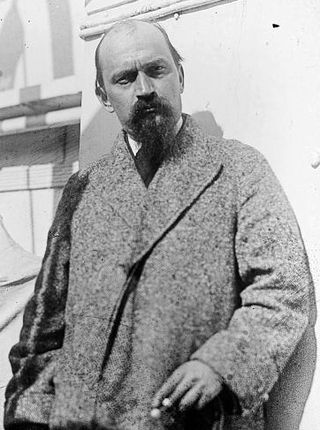
Ivan Meštrović was a Croatian and Yugoslav sculptor, architect, and writer. He was the most prominent modern Croatian sculptor and a leading artistic personality in contemporary Zagreb. He studied at Pavle Bilinić's Stone Workshop in Split and at the Academy of Fine Arts Vienna, where he was formed under the influence of the Secession. He traveled throughout Europe and studied the works of ancient and Renaissance masters, especially Michelangelo, and French sculptors Auguste Rodin, Antoine Bourdelle and Aristide Maillol. He was the initiator of the national-romantic group Medulić. During the First World War, he lived in emigration. After the war, he returned to Croatia and began a long and fruitful period of sculpture and pedagogical work. In 1942 he emigrated to Italy, in 1943 to Switzerland and in 1947 to the United States. He was a professor of sculpture at the Syracuse University and from 1955 at the University of Notre Dame in South Bend, Indiana.

Toma Rosandić was a Serbian and Yugoslav sculptor, architect and fine arts pedagog. Together with Ivan Meštrović (1883–1962), he was the most prominent of Yugoslav sculptors of his day.

Uroš Predić was a Serbian Realist painter. Along with Paja Jovanović and Đorđe Krstić, he is considered the most important Serbian painter of realism. Predić is best remembered for his early works, in which he depicted the "real" life of ordinary people. Later, he made a great contribution in church painting and portraits. Predić's opus includes a total of 1658 works.

The Kingdom of Serbia was a country located in the Balkans which was created when the ruler of the Principality of Serbia, Milan I, was proclaimed king in 1882. Since 1817, the Principality was ruled by the Obrenović dynasty. The Principality, under the suzerainty of the Ottoman Empire, de facto achieved full independence when the very last Ottoman troops left Belgrade in 1867. The Congress of Berlin in 1878 recognized the formal independence of the Principality of Serbia, and in its composition Nišava, Pirot, Toplica and Vranje districts entered the South part of Serbia.

Nadežda Petrović was a Serbian painter and one of the women war photography pioneers in the region. Considered Serbia's most famous expressionist and fauvist, she was the most important Serbian female painter of the period. Born in the town of Čačak, Petrović moved to Belgrade in her youth and attended the women's school of higher education there. Graduating in 1891, she taught there for a period beginning in 1893 before moving to Munich to study with Slovenian artist Anton Ažbe. Between 1901 and 1912, she exhibited her work in many cities throughout Europe.
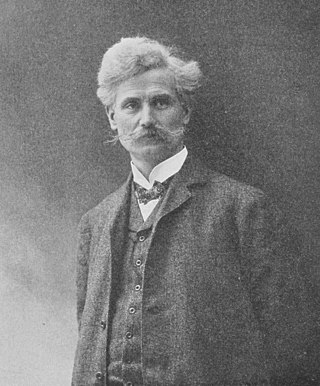
Đorđe Jovanović was a Serbian sculptor and a full member of the Serbian Academy of Sciences and Arts.
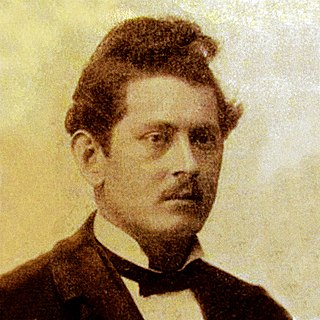
Simeon Roksandić was a Serbian sculptor and academic, famous for his bronzes and fountains. He is frequently cited as one of the most renowned figures in Serbian and Yugoslavian sculpture.
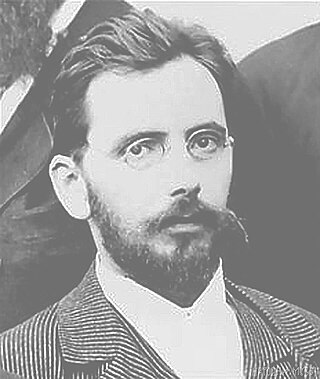
Marko Murat was a Serbian painter from Dubrovnik who spent 20 years of his life in Belgrade, becoming a leading member of the Serbian and Yugoslav art scene at the time, before returning to his home town where he made a substantial mark in art conservation.
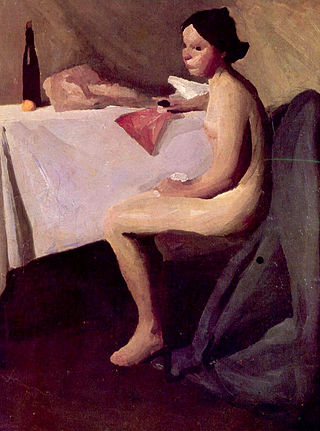
Vladimir Becić (1886–1954) was a Croatian painter, best known for his early work in Munich, which had a strong influence on the direction of modern art in Croatia.
Todor Švrakić (1882–1931) was a Bosnian painter. He was one of the early 20th century pioneers of Bosnian painting within the European style and is considered one of the Western Balkans' most notable watercolor artists.

The Turin International was a world's fair held in Turin in 1911 titled Esposizione internazionale dell'industria e del lavoro. It received 7,409,145 visits and covered 247 acres.
Ljubomir Tito Stjepan Babić was a Croatian artist, museum curator and literary critic. As an artist, he worked in a variety of media including oils, tempera, watercolour, drawing, etching, and lithography. He was one of the most influential figures in the Zagreb art scene between the two world wars.
Tomislav Krizman (1882–1955), was a Croatian painter, graphic artist, costume and set designer, teacher, author and organizer of cultural events. He painted in oils and tempera, although he is principally remembered for his remarkable graphic art.

Lazar Drljača was a Bosnia and Herzegovina painter, who self-identified as the Bosnian bogumil.
Virgil Meneghello Dinčić (1876–1944) was a Croatian painter and art teacher. He is best known as a member of the school of Split caricaturists, but also painted scenes of Croatian life.

Mother Serbia, Serb Mother or Mother of All Serbs, is a female national personification of Serbia, the nation-state of Serbs.

Stevan "Steva" Todorović was a Serbian painter and the founder of modern fencing and Sokol movement in Yugoslavia.
Mališa Glišić was a Serbian painter from the early 20th century and one of the forerunners of Serbian Impressionism with Nadežda Petrović, Kosta Miličević and others of his generation. He was educated in Belgrade and Munich, created works in Italy until the First Balkan War, when he returned to Serbia and joined the army. He died in either 1915 or 1916 under unexplained circumstances. There are very few written documents left about him, as well as few preserved pictures.
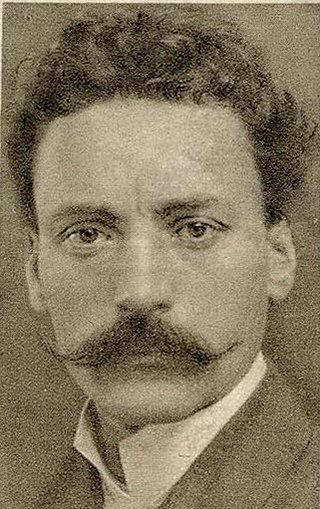
Paško Vučetić was one of the two most prominent Dalmatian Serb artists of the first half of the 20th century.

Petar Bajalović was a Serbian architect who lived and worked during the latter part of Belle Epoque and the Interwar period. He was one of the representatives of architectural modernism in Serbia.















